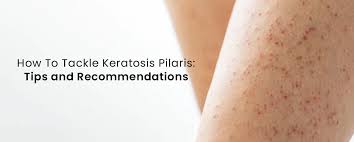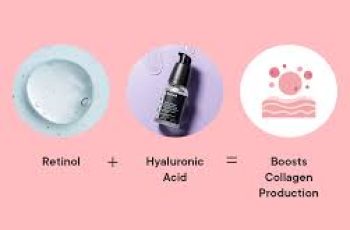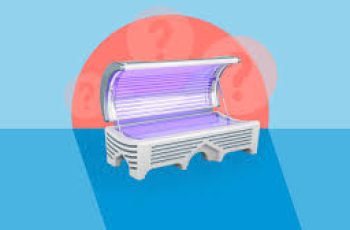
The Science of Keratosis Pilaris (Chicken Skin): Causes, Treatments, and Skincare Solutions
Keratosis pilaris (KP), often casually referred to as “chicken skin,” is a widespread yet harmless dermatological condition that affects millions of individuals worldwide.
While not medically serious or contagious, its rough texture and patchy appearance can cause considerable aesthetic concern, especially during adolescence and young adulthood.
This guide will explore the underlying science of KP, review the most effective treatments, and offer expert-backed recommendations for exfoliating and moisturizing products.
Whether you’re a teenager struggling with this condition for the first time or an adult seeking long-term solutions, this article aims to help you understand and manage KP with confidence.
What Is Keratosis Pilaris?
Keratosis pilaris is a common skin condition caused by an overproduction of keratin, a structural protein that helps protect the skin from environmental damage.
In people with KP, excess keratin builds up within the hair follicles, forming tiny, hard bumps that resemble goosebumps or plucked chicken skin.
These bumps are often flesh-colored, red, or white, and they typically appear on areas like the upper arms, thighs, cheeks, and buttocks.
Quick Facts:
Prevalence: Affects up to 50-80% of adolescents and approximately 40% of adults.
Symptoms: Rough, dry patches of skin, often accompanied by tiny, painless bumps.
Common areas: Upper arms, thighs, cheeks, buttocks.
Not contagious: KP is not caused by bacteria or fungus and cannot be transmitted.
Genetic component: KP tends to run in families and is linked to other dry skin conditions, such as eczema and ichthyosis.
What Causes Keratosis Pilaris?
The exact cause of keratosis pilaris is not fully understood, but dermatologists agree that it is linked to genetic and environmental factors.
The condition is believed to be a result of hyperkeratinization, where the body produces too much keratin that then plugs the hair follicles, creating a rough texture.
Contributing Factors:
Genetics: KP is often inherited in an autosomal dominant fashion, meaning only one parent needs to pass on the gene for a child to be affected.
Hormonal changes: Adolescents, particularly during puberty, may experience an increase in KP due to fluctuating hormone levels.
Dry climate or cold weather: Lack of humidity can worsen KP symptoms by increasing skin dryness.
Underlying skin conditions: Individuals with atopic dermatitis or ichthyosis vulgaris are more likely to develop KP.
Is Keratosis Pilaris Dangerous?
No, keratosis pilaris is not dangerous or harmful to your health.
It is purely cosmetic and usually does not require medical treatment unless the affected individual feels self-conscious or experiences discomfort.
While some people experience mild itching or redness, most cases are asymptomatic.
Despite its harmless nature, many people seek treatment for KP due to concerns about appearance, especially during warmer months when more skin is exposed.
How to Treat Keratosis Pilaris
There is no permanent cure for keratosis pilaris, but with regular maintenance and the right combination of skincare products, it can be significantly improved.
Treatment typically involves two main strategies:
Exfoliation – Removing excess keratin and dead skin cells from the skin’s surface.
Moisturization – Replenishing hydration to keep skin soft and prevent further buildup.
Exfoliating Ingredients That Help With KP
Exfoliation is the first step in smoothing out rough KP-prone skin. This process helps dissolve or remove the keratin plugs and improve skin texture.
1. Alpha-Hydroxy Acids (AHAs)
AHAs are water-soluble acids derived from fruits and milk. They work by loosening the bonds between dead skin cells, allowing them to slough off easily.
Glycolic Acid: Penetrates deeply to dissolve keratin and reveal smoother skin beneath.
Lactic Acid: Hydrates while exfoliating, making it ideal for those with dry, sensitive skin.
Mandelic Acid: A gentle, less irritating option derived from almonds, suitable for sensitive skin types.
2. Beta-Hydroxy Acids (BHAs)
BHAs are oil-soluble acids that can penetrate deeper into the pores.
Salicylic Acid: Excellent for oily or acne-prone skin, salicylic acid exfoliates inside the pores and reduces inflammation.
3. Enzymatic Exfoliants
Natural fruit enzymes can offer gentle, non-abrasive exfoliation for sensitive skin.
Papain (Papaya enzyme): Helps break down the proteins in dead skin.
Bromelain (Pineapple enzyme): Offers mild keratolytic action with anti-inflammatory benefits.
4. Physical Exfoliants
These mechanically slough away dead skin but should be used with caution.
Jojoba beads: Spherical and non-abrasive, ideal for gentle use.
Microfiber cloths: Effective when paired with a creamy cleanser, especially for facial KP.
Moisturizing Ingredients for Keratosis Pilaris
After exfoliating, it’s essential to follow up with a rich, hydrating moisturizer to protect the skin and maintain results.
1. Urea
Urea is a keratolytic agent that both exfoliates and hydrates. At concentrations above 10%, it helps break down hardened keratin and improve moisture retention.
2. AHAs in Moisturizers
Some moisturizers combine AHAs (like lactic acid or glycolic acid) with emollients, providing gentle exfoliation alongside deep hydration.
3. Ceramides
Ceramides are lipid molecules naturally found in the skin that help repair and strengthen the skin barrier, crucial for keeping moisture in and irritants out.
4. Natural Oils and Butters
Coconut Oil: Moisturizes and has antibacterial and anti-inflammatory properties.
Shea Butter: Rich in vitamins A and E, it’s a nourishing emollient that softens skin texture over time.
5. Other Humectants
Hyaluronic Acid: Draws water into the skin, plumping and hydrating without greasiness.
Glycerin: A highly effective humectant that binds moisture to the skin.
Professional Treatments for Stubborn KP
For individuals who do not see improvement with at-home care, professional dermatologic treatments may provide more dramatic results:
1. Chemical Peels
Professional-grade peels using glycolic or salicylic acid can deeply exfoliate and improve skin texture.
2. Microdermabrasion and Dermabrasion
These mechanical exfoliation methods remove the outer layers of dead skin to smooth out the skin surface.
3. Laser Therapy
Fractional lasers and blue light therapy can reduce inflammation and redness, especially in severe cases.
Managing Keratosis Pilaris Long Term
KP often improves with age, and many people notice reduced symptoms in adulthood. However, regular care is required to keep it under control.
Daily Routine for KP Management:
Cleanse: Use a gentle, non-stripping cleanser.
Exfoliate: 2–3 times a week using a chemical or enzymatic exfoliant.
Moisturize: Daily, ideally right after showering.
Protect: Use sunscreen daily, as AHAs and BHAs can increase sun sensitivity.
Lifestyle Tips:
Avoid hot showers which strip moisture.
Use a humidifier in dry climates or winter months.
Wear breathable fabrics to reduce irritation from friction.
Is There a Cure for Keratosis Pilaris?
Unfortunately, there is no permanent cure for keratosis pilaris.
However, consistent treatment with exfoliants and moisturizers tailored to your skin type can significantly reduce its appearance and texture.
It’s also worth noting that many people grow out of KP, particularly after puberty. Still, flare-ups can happen during periods of hormonal change, stress, or weather shifts.
Final Thoughts: Living With and Treating KP
Keratosis pilaris may be a common and harmless condition, but for many, it has a real impact on self-confidence and body image.
Fortunately, it’s also one of the most treatable cosmetic skin conditions with the right approach.
Understanding your Baumann Skin Type can help you select products that are best suited to your skin’s unique needs.
Whether you prefer at-home solutions or professional dermatologic treatments, there are many effective ways to minimize the appearance of KP and enjoy smoother, clearer skin.


